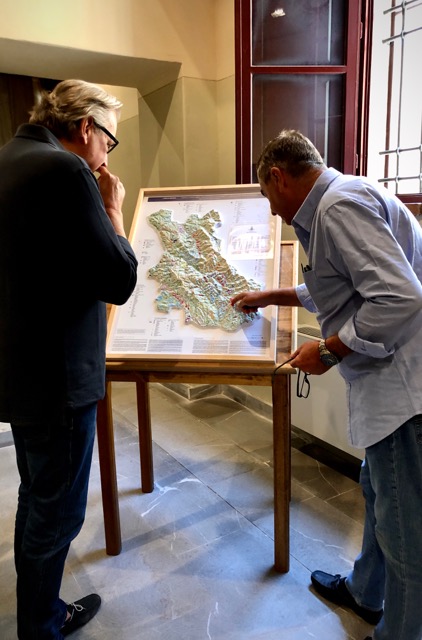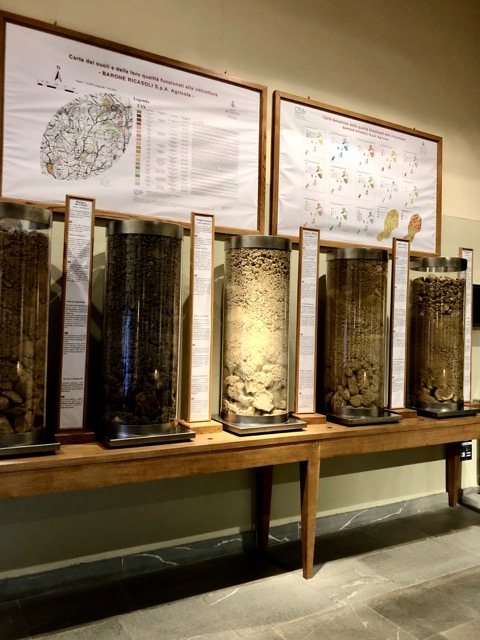Castello di Brolio
- Tony Wood
- May 14, 2020
- 4 min read
Upon entering the estate of the Ricasoli family in Gaiole in Chianti, Tuscany, it is impossible not to be impressed.

The 1,200 hectare estate includes a twelfth century castle (rebuilt several times since), an inestimable collection of artworks, an important catalogue of antique weaponry, outstanding gardens, 240 hectares laid to vine, 26 hectares of olive grove.

The present owner and custodian is Barone Francesco Ricasoli, a man who can trace his family lineage as far back as the ninth century. In 1993 he took back control of this distinguished historic estate after a short period when the winery was out of the family hands.
During my visit to Castello di Brolio, Barone Francesco Ricasoli, spent hours of his precious time graciously responding to my endless questions, personally escorting me to every part of the estate and conducting the comprehensive tasting, which turned out to be one of “those rare wine moments.”

While visiting the immaculate vineyards, conversation flowed. There are no aspects of the estate which Barone Ricasoli is not fully conversant and up to speed. As President of this highly successful estate with an acute eye for detail and a clear viewpoint of the market place ahead, he has rebuilt this winery on teamwork and mutual respect for his work force, constantly referring to ‘we’ rather than ‘I’…

Returning to the imposing office building through the retail shop, we descend into the vast tasting area. The ancient armoury collection, expertly photographed by Barone Francesco Ricasoli, is displayed on the walls. The skilled layout and design of the tasting rooms, grants the opportunity to engage with large groups of visitors, as well as intimate areas for the more seasoned appreciator to quietly savour the wines on offer.
Here, detailed maps and large glass containers of soil studies on display, assist the visitor in understanding the diversity of terroir covering the 240 hectares laid to vine.
With regards to the soil characteristics, the estate can be divided into 5 principal substrates:
Macigno del Chianti Formation
Commonly called Arenaria, mainly sand and rock, well drained. High elevations.
Vines planted: Sangiovese, Merlot and Chardonnay
Monte Morello
Limestone commonly called Alberese, calcareous clay soil, rich in calcium.
Southern exposure. Vines planted: Sangiovese, Cabernet Sauvignon and Merlot.
This includes the Colledilà vineyard
Ancient Fluvian Terrace
Silty deposits, poorly structured with clay.
Vines planted: Sangiovese and Cabernet Sauvignon.
Scaglia Toscana
Mainly Galestro (schist based soils). Geological formation of Scaglia Toscana and Macigno del Chianti.
Vineyards exposure west, north west and south. Vines: Sangiovese.
Marine Deposit
Pliocene marine sediment, sandy deposits and pebbles, deeper levels of clay. Variable exposure. Vines: Sangiovese.
The Ricasoli 1141 estate produces:
Castello di Brolio Chianti Classico Gran Selezione
Sangiovese and Abrusco (a rare grape, grown primarily in Tuscany, also referred to as Abrostino or Colorino, was near to extinction with only 15 hectares reported in the 2000 census). This wine is only produced in the finest vintages.
Brolio Chianti Classico
Sangiovese, Merlot, Cabernet Sauvignon
Brolio Bettino Chianti Classico
Sangiovese, Abrusco
Brolio Riserva Chianti Classico Riserva
Sangiovese, Merlot, Cabernet Sauvignon
Chianti Classico Gran Selezione Single Crus:
Colledilà
Sangiovese
Roncicone
Sangiovese
Ceniprimo
Sangiovese
Toscana IGT:
Torricella
Chardonnay
Casalferro
Merlot
Albia Bianco
Sauvignon Blanc, Chardonnay, Malvasia Bianca
Albia Rosato
Sangiovese, Merlot
Chianti Ricasoli Chianti
Sangiovese 85% and other varieties 15%
Rocca Guiccianda Chianti Classico Riserva
Sangiovese 90% Merlot 5% Canaiolo 5%
Grappa, Grappa Riserva, Passito and Vinsanto are also produced.
I also feel the labels from this estate are worthy of special mention for their artistic value.

Tasting Notes
Torricella 2017
Pale straw yellow in colour. This vintage was made with a small amount of Sauvignon Blanc. Unusual clean crisp edge of acidity, underpinned with a clear line of minerality. White peach, trace of vanilla. Elegant and quaffable.
Points 91 TW

Brolio Chianti Classico 2017
Deep ruby red. Intense. Floral aromatics, dark cherry, clove notes, bitter chocolate. Difficult growing year, fruit selection important here.
Points 91 TW

Brolio Chianti Classico Riserva 2016
Ruby red in colour. Warm black fruit, Orange zest, eastern spice. Layered intensity. Fine tannins. Long finish.
Points 95 TW

Castello di Brolio Gran Selezione 2015
Dark ruby red. Mixture of red and black berries. Sweet tobacco, mediterranean herbs, spice. Full bodied . Persistent.
Points 94 TW

Some two or three weeks prior to my visit to Castello di Brolio, James Suckling published his tasting notes on the three single crus I was about to taste. Although I have the greatest respect for James Suckling’s opinion, I was doubtful that all three labels could be as great as the praise bestowed.
My concerns were completely unfounded…
Roncicone Chianti Classico Gran Selezione 2016
Deep ruby red in colour. White floral notes, dark cherry, plum, new leather. Intense precision. Solid core of purity of fruit. Layered. Exceptional finesse. Almost flamboyant. Wow!
Points 97 TW

Colledilà Chianti Classico Gran Selezione 2016
Bright ruby red in colour. Dark cherry, burnt liquorice, tinge of tobacco leaf. Brooding and muscular. Expands on the middle palate. Balanced. Needs time to tell the whole story.
Points 98 TW

Ceniprimo Chianti Classico Gran Selezione 2016
Intense ruby red in colour. Refined floral notes, orange zest, red fruits. Stunning textural bounty. Considerable appeal. Long, long finish.
Points 97 TW

This was the finest back to back tasting of a single vintage from a single estate I have ever experienced in Chianti Classico.
My thanks to Barone Francesco Ricasoli for his generosity of time spent with me in July 2019.
Historical Note:
Barone Bettino Ricasoli (1809- 1880), statesman, scientific researcher and wine entrepreneur, first fixed the “formula” for Chianti in 1872. The recommendation was 70% Sangiovese, 15% Canaiolo and 15% Malvasia Bianca.
In 1967 the Denominazione di Origine Controllata ( DOC ) regulation set by the Italian government, firmly established the “Ricasoli formula” of a Sangiovese based blend, with 10% to 30% of Malvasia and Trebbiano.
Some producers ignored this and made wines that did not conform to this standard, selling them as merely Vino da Tavola. These wines used Sangiovese but added Cabernet Sauvignon and/or Merlot or other French varieties and despite being classified as low grade Vino da Tavola, they became very popular with wine critics and consumers. Today these wines are referred to as Super Tuscans. So the rise of Super Tuscan wines is based on the restrictive DOC practices of the Chianti zone.
Although over the past 30 years the “Chianti formula” was changed and redefined, the basic principle of Barone Bettino Ricasoli of a minumum 70% Sangiovese plus other indigenous grapes is still the bedrock of today’s Chianti Classico.


Interesting Note: In 1996 one of the Castello di Brolio properties (as well as several stunning sites, including the secular Il Leccio tree), were featured in the film Stealing Beauty, directed by Bernardo Bertolucci and nominated at the 49th Cannes Film Festival and multiple other cinematography awards.
© TW 2020














Comments